#roma aeterna
Explore tagged Tumblr posts
Text
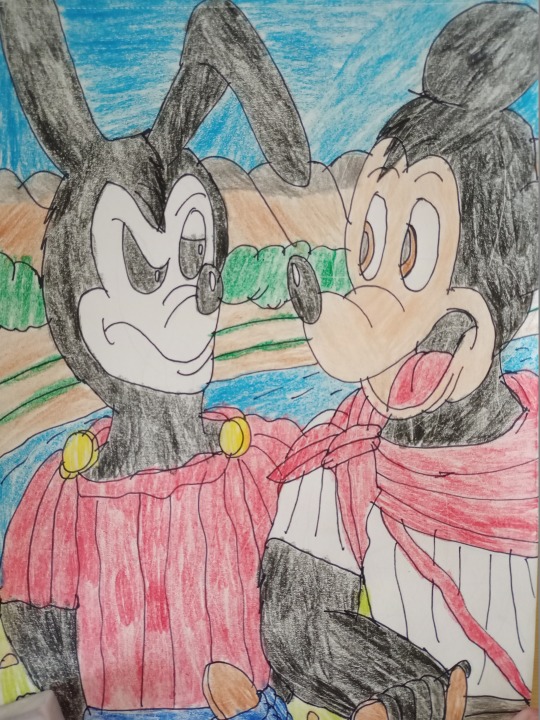
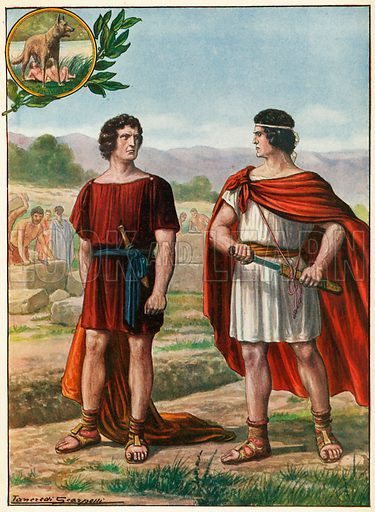
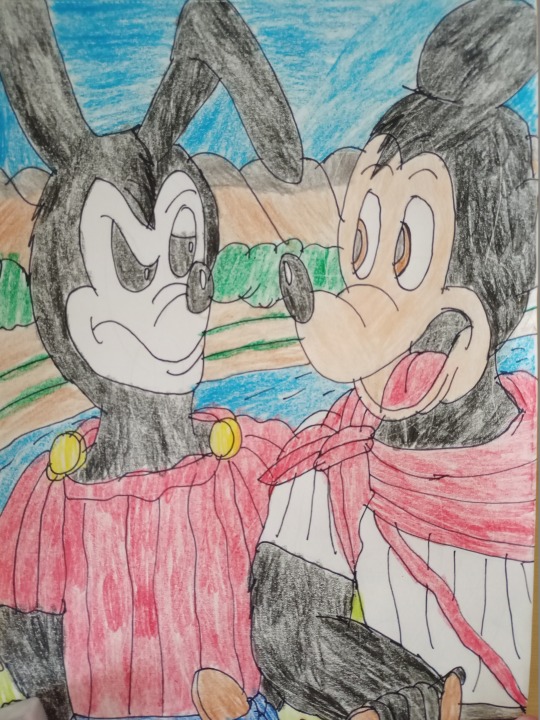

Mickey Mouse and Oswald the Lucky Rabbit as Romulus and Remus, as the founders of Rome - Toon History - History in Duckverse and Mouseverse - Happy Birthday to the Best City!
Yes, it's time to change my plans now with my new project called Toon Historia, also History in Duckverse and Mouseverse in which our famous cartoon and comic characters play famous historical figures and will play in important historical events . And first I drew Oswald the Lucky Rabbit and Mickey Mouse as the founders of Rome, as Romulus and Remus. Romulus and Remus, according to Roman mythology and Roman tradition, were the sons of Rhea Sylvia and the god Mars and grandsons of King Numitor. Numitor's brother Amulius overthrew his brother and ordered the execution of his children, including the sons of Sylvia who were thrown into the Tiber River. However, according to legend, a she-wolf found them and raised them until the shepherd Faustulus came along and adopted them. Afterwards they grew up and when they heard the truth, they went to overthrow Amulius and succeeded and restored their grandfather Numitor to be king of the city of Alba. Afterwards, Romulus and Remus went to seven hills in the valley of the Tiber River and there on April 21, 753 BC they founded the eternal city, which will be called Rome. Yes, there was a conflict between the two in which Romulus killed his brother (a tragic event) and thus took the title of the first king of Rome.
Oswald and Mickey who were created by Ub Iwerks and Walt Disney in 1927 and 1928 also became the first Disney icons, however the conflict between Iwerks and Disney resulted in Oswald being part of Universal, until in 2006 Disney bought the rights to Oswald. Yes, that's why I drew Mickey and Oswald as Romulus and Remus, because of that parallel, but don't worry, Mickey won't kill his brother, even though mice and rabbits are not the same species, they are still considered brothers because of Epic Mickey. As Romulus and Remus were the founders of Rome, so Oswald and Mickey were the founders of the new world.
I drew this last year, but I waited for this moment to publish now and I drew it as a redraw from an illustration by Tancredi Scarpelli (1866–1937) for Storia d'Italia by Paolo Giudici (Nerbini, 1929). I drew Mickey in my own style, while I left the old look for Oswald, because I still like him better with dot eyes. And yes, I drew this on the occasion of the 100th anniversary of the creation of Disney as well as the 75th anniversary of Topolino magazine, which is published in Italy, and the capital of Italy is definitely Rome. Yes, Rome, the eternal city and capital of one of the greatest empires and greatest civilizations of all time. As well as related to the birthday of the City of Rome, which is celebrated on April 21 every year. Happy Rome Day! Roma Aeterna!
I hope you like this drawing and this idea and if you want to support feel free to like and reblog this! I just ask that you don't copy my same ideas without mentioning me and without my permission. Thank you! Happy Rome Day, my favorite city in the world!
#my fanart#mickey mouse#oswald the lucky rabbit#topolino#disney#artists on tumblr#my redraw#romulus and remus#rome#history#ancient rome#mouseverse#comics#cartoons#epic mickey#mickey and oswald#toon history#duckverse in history#mouseverse in history#753 BC#21th April#disney mouse#disney rabbit#fanart#my style#my art#art#disney fanart#roma aeterna#classic disney universe
30 notes
·
View notes
Text

Roma caput mundi
0 notes
Text
Leaders of Rome
youtube
I made this video 4 years ago. Next time I have to include Majorian and a couple of mother important romans.
Who is missing in your opinion?
0 notes
Text
0 notes
Text
Ave!
I just gonna consider all Roman obsessed fellows and artists here now as members of a modern Roman-Army. You all in?
Don't let the Gauls know we are still all here-
24 notes
·
View notes
Text



📍Musei Capitolini, Roma
#medusa#meduza#musei capitolini#roma#rome#ancient greek mythology#mythology#greek mythology#urbs aeterna#ancient sculpture#marble sculpture#sculpture#art#cultural heritage#italian art#italian places#italian artist#italie#italy#italia#lazio#roma capitale#arte#scultura
6 notes
·
View notes
Text
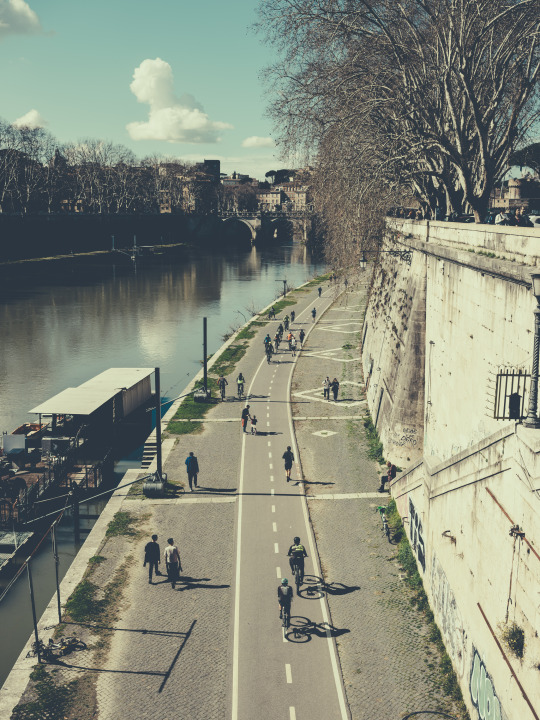
photo ©Marino Mannarini all rights reserved
8 notes
·
View notes
Text

We used to have a country, a real country y’know...
2 notes
·
View notes
Text












AeternaNova Northern Macedonian ethnographic project
"AeternaNova" (in Latin "aeterna"- ancient and "nova"-new) is an exhibition of photographs, folk costumes, and an ethnographic film, curated by Filip Petkovski Ph.D., UNESCO-certified heritage expert. It aims to represent the cultural heritage of Macedonians, Albanians, Turks, Roma, and Vlachs living in North Macedonia, and to feature recorded personal narratives of the models on the photos who are leaders in their professions (actors, musicians, athletes, public figures), about their views and experiences with diversity and inclusion.
The project incorporates new media, ethnography, and visual anthropology to contextualise the topic, while each photograph serves as a visual narrative aimed to illustrate the dynamic evolution of cultural identity in the region. We are led by the idea that cultural heritage must be reinterpreted and modernised to be largely disseminated, especially amongst the younger population, who might mystify and reject the topic of cultural heritage. The exhibition will take place at the Youth Cultural Centre in Skopje, while the results of the project will be published as a research paper in the journal "Macedonian Folklore" in which we will explore diversity, inclusion, and peaceful coexistence.
The project aims to emphasise the similarities in the cultures of all of the communities that live in North Macedonia and encourages the audience to engage in a process of mutual learning and enrichment of knowledge related to cultural heritage."
#folklore#ethnographic#slavic#folk costumes#slav#macedonian#macedonia#northern macedonia#vlach#albanian#turkic#yoruk#roma#macedonians#northern macedonians#balkan
470 notes
·
View notes
Text
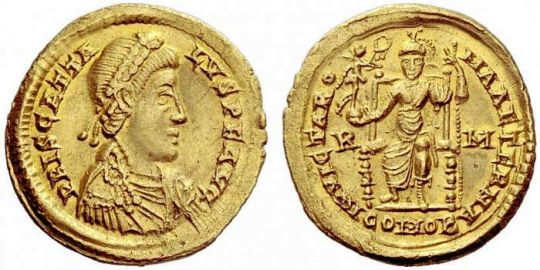
Gold solidus of Priscus Attalus, minted in 409-10 CE. A senator from a long-standing aristocratic family who eventually became praefectus urbi (city prefect) of Rome, Attalus converted to Arian Christianity in 409 and was proclaimed emperor by the similarly Arian Visigoths, in opposition to the Catholic ruler Honorius. He would spend two brief periods in power before Honorius finally defeated and captured him in 416, leading to the last triumphal procession in the Western Roman Empire. (Two of Attalus' fingers were cut off, but he was allowed to live and banished to the Lipari Islands north of Sicily.)
On the obverse, the bust of Attalus, wearing a pearl diadem and a cuirass. On the reverse, the seated figure of Roma, holding a globe atop which Victory perches, surrounded by the inscription INVICTA ROMA AETERNA--a somewhat hollow boast, as Rome itself would be sacked by the Visigoths in 410. Photo credit: Numismatica Ars Classica NAC AG
#classics#tagamemnon#history#ancient history#Ancient Rome#Roman Empire#Roman history#Late Roman Empire#late antiquity#art#art history#ancient art#Roman art#Ancient Roman art#Roman Imperial art#Late Roman art#late antique art#coins#ancient coins#Roman coins#Ancient Roman coins#solidus#goldwork#numismatics#ancient numismatics#Roman numismatics
46 notes
·
View notes
Text
A Római Birodalom már az egész földkerekséget meghódította. Már mindenütt római provinciák vannak. Az eget Római Birodalmi gőzléghajók sora szántja fel. Az egyetlen apró gall falut, amely ellenállt a hódító római légiósoknak, tavaly leküzdötték a pannon gőzijjászok. Kowáksz Wrestlemanus gyermekkorában került az egyik legjobb pannon lanista kezébe, aki észrevette az ifjú rabszolga kivételes tehetségét és erejét, ezért birkózónak nevelte. Az ifjú Wrestlemanus egyetlen egyszer sem talált legyőzőre, s veretlensége a 199. győzelméig folytatódott. Ez fordulópont lett életében, hiszen a 200. győzelme után felszabadítják és mint szabad római polgár élhet tovább. A 200. meccsére minden jegy elfogyott elővételben, s hogy a népet mégjobban felspannolják, egy messzi-messzi provinciából, Niponból hoztak számára egy ellenfelet. A japán birkózó kb. kétszer akkora volt, mint Wrestlemanus és villámgyors. S amit még érdemes volt tudni róla, hogy eddig ő sem talált legyőzőre. Megállíthatatlan volt a küzdőtéren, sőt Lacathos Obeliszkusz, Wrestlemanus pannon lanistája azt is kiderítette, hogy a japán birkózónak van egy speciális fogása, a 'japán-halál szorítás', amelyből eddig még senki sem tudott szabadulni. Wrestlemanus erőltetett edzéssel készült a küzdelemre. Naponta felfutott észak legmagasabb ormára, kitépte a legnagyobb fenyőt, meggyújtotta és lángoló betűkkel írta az égre: ROMA AETERNA! Ezután egy gyors sprint hazafelé, a jeges tenger átúszása, néhány medve legyőzése és pár mamut agyonverése után könnyű diétás vacsora… A pannon lanista gőzléghajón követte, buzdította, s nem győzte hangsúlyozni, gőzmegafonon állandóan harsogni neki: Ne hagyd, hogy a japán-halál szorításába fogjon! Még senki sem élte túl a japán-halál szorítását. S ez így ment nap, mint nap. Végre eljött a küzdelem napja. Az amfiteátrum megtelt nézőkkel, egész Róma látni akarta a nem mindennapi küzdelmet. A mérkőzés kezdetén, amikor a birkózók a küzdőhomokra kifutottak, a pannon lanista még akkor is ott loholt Wrestlemanus mellett és a fülébe kiabálta tanácsait: Ne hagyd, hogy a japán-halál szorításába fogjon! Még senki sem élte túl a japán-halál szorítását. Elhelyezkedtek a küzdőtéren, harsonaszó, Caesar bevonult. A Római Birodalom császára és kísérete helyet foglalt, a császár intett és a harc megkezdődhetett. A küzdelem még el sem kezdődött igazán, mikor a japán elkapta a római birkózót, és azonnal a japán-halál szorításába fogta. A közönség eddigi morajlása mind elhallgatott, lélegzet visszafojtva várták, hogy mi lesz. A pannon lanista eltakarta a szemeit, s még hőn szeretett hitvese, Orsósz Kariathida sem tudta megvigasztalni. Egyszer csak a csend abbaszakadt és mindenhonnan az egyre hangosabb RÓMA! RÓMA! RÓMA! kiáltások hallatszottak. A pannon lanista elkapta a kezét a szemei elől és azt látta, hogy a japán birkózó a homokban fekszik teljesen kicsavarva és holtan, Wrestlemanust meg ünnepli a tömeg. Amikor mindenki levonult a pályáról, s az ünneplő tömeg hagyta, hogy Wrestlemanus egyedül lehessen a cellájában, a lanista odament hozzá és megkérdezte: - Hogy a fenébe tudtál kiszabadulni a japán-halál szorításból?! Tudod, amikor megláttam mi történik, eltakartam a szemem, nem mertem odanézni… - Nos, lanista, a japán megragadott, és úgy megcsavarta a testem, hogy azt gondoltam, minden csontom összemorzsolódott. Az egész testem úgy fájt, hogy ilyet még elképzelni sem tudtam eddig… Egyszer csak megjelent a szemeim előtt egy zacsi, benne két herével. Hirtelen beléjük haraptam… - Micsoda?? - kérdezte a lanista - Ilyet tilos csinálni! Mi van, ha a Caesar visszavonja a 200. győzelmed utáni felszabadításod?! - Nem tudtam erről a szabályról. - szabadkozott Wrestlemanus. - De egy dolgot elárulhatok. Fogalmam sem volt, milyen erős vagyok, amíg meg nem haraptam a saját golyóimat.
2 notes
·
View notes
Text
GURPS Alternate Earths ocs
Here are my ocs for the tabletop RPG GURPS Alternate Earths.
Denver Markle, a Candian man from Earth Dixie.
Chiyako Nagaioka, a Japanese woman from Earth Reich-5.
Edward Plarious, a man from Earth Roma Aeterna.
Genzo Kaguta, a Japanese man from Earth Shikaku-Mon.
Jong, a Native American man from Earth Ezacalli.
Henry Brownnann, a American man from Earth Gernsback.
Conner Hushbriger, a Austrian man from Earth Cornwallis.
Manchu Hui, a Chinese man from Earth Ming-3.
Davis Wesboar, a Svearika man from Earth Midgard.
Hafiz, a Arabic man from Earth Caliph.
Samus Longbrench, a man from Earth Aeolus.
Felicity Pierlin, a Anglo-French woman and nun from Earth Centurm.
3 notes
·
View notes
Text

Augustus of Prima Porta.
A beautiful statue of the first emperor of Rome: Imperator Caesar Divi Filius Augustus
Ave Caesar, Roma aeterna est.
1 note
·
View note
Text
relearning latin and greek
reading Roma Aeterna sucks ass
sed tamen iterum perlegi pars I llpsi duabus septimanis :)
i need a breath of fresh air so I'll read some juvenal and start Logos this evening
3 notes
·
View notes
Note
Fellow Rome enthusiast I believe?
Yessir! Roma aeterna 🙏🙏 Love Rome, one day I’ll post all of my armour and toga studies :) If it wasn’t obvious by my username my favourite general in all of history is Scipio Africanus (From the Second Punic War), close behind is Caesar though.
My favourite emperors are Augustus and Aurelian, it’s nice to meet another person that likes Rome! Mind dropping some things you like about Rome? 👀👀
#roman republic#rome#ancient rome#stan scipio africanus#scipio africanus#augustus#roman empire#romaboo#romeaboo
16 notes
·
View notes
Text
Anne Hathaway e Zendaya estrelam nova campanha da Bulgari
Duas das maiores estrelas de Hollywood atualmente estão juntas mais uma vez para a campanha ‘Eternally Reborn’ da Bulgari. Nesta temporada, Anne Hathaway e Zendaya se unem a Liu Yifei para apresentar as joias da coleção ‘Aeterna’, em meio a alguns dos cenários mais emblemáticos de Roma. Anne aparece usando peças com pedras preciosas multicoloridas e vibrantes junto de diamantes, enquanto Zendaya…

View On WordPress
#agrund#anne hathaway#arlindo grund#bulgari#campanha#estilo#fashion#joias#moda#moda feminina#style#woman style#zendaya
2 notes
·
View notes